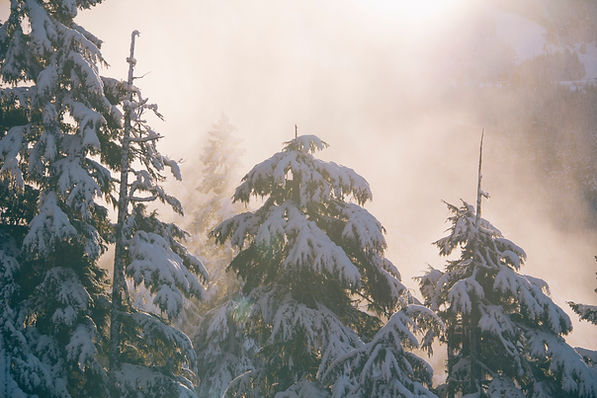5 Tips for Safeguarding Your Trees During the Colorado Winter

Just because the first round of snow has fallen in Colorado doesn't mean that your landscaping upkeep is done until Spring. It is essential to protect newly planted trees or those that are vulnerable during the colder months. Not only is it expensive to replace trees that have died during the winter, but it can also be quite an undertaking for their removal, dependent upon their size. Follow our tips to have healthy trees in the Spring.
Winter Watering
Deep watering can help to provide the moisture needed to help your trees continue to thrive even during the winter. When deep watering, do not apply the water directly to the tree's trunk, as it increases the potential for rotting. Instead, water under the entire tree canopy and beyond the drip line. A deep watering session is achieved when water saturates approximately eight inches in the soil.
During the warmer months, when you are not hand watering, this process can take only 15 minutes. However, during the winter, this process will take longer. Therefore, continuing to water your trees well during the fall helps to increase the success of your winter watering regimen.
Since our snow melts between storms in Denver, try to water your trees once per month when the snow is gone and the temperature exceeds 40 degrees. Frozen soil cannot absorb moisture and, therefore, water will not have the chance to reach the roots of your trees.
The trees that will benefit most are three years old or less. Learn more about winter water with our winter watering guide.
Add Mulch
Adding mulch to the base of your trees will help to protect your trees as the temperatures begin to dip and also help to maintain moisture. Add at least 4-6 inches of mulch around your tree. However, ensure that you are not just applying mulch around the tree's trunk, as this may increase the chance of voles and other rodents dining on the bark of your tree, as mulch is where these animals often forage for food during the snowy months. A few inches of space between your tree trunk and mulch line is sufficient.
Use Burlap Wraps
Burlap wraps help trees with multiple issues. Wrapping burlap around the tree trunk helps protect them from animals and sunscald. Sunscald is very common for Colorado trees and shrubs during the winter. In addition, burlap wraps also help to minimize moisture loss and work as a windbreak.
Smaller trees, newly planted trees, and evergreens can benefit most from burlap wraps.
Fertilize
After ensuring your tree has entered dormancy, this is a great time to fertilize. Just make sure that you are applying the fertilizer when the ground is not frozen, as it won't be absorbed into the soil. Since plants continue to grow during the winter, fertilizing during this time helps them to grow stronger and become more sturdy for Spring.
Give Your Trees Time
It might be tempting to get rid of that "dead" tree as soon as Spring begins, but your tree might just need a little more time. If there was a cold snap at the end of winter after temperatures started to rise, this could damage plant tissue and impact your tree in the spring. Give your tree time to recover before making the decision to cut it down, especially if it produces even a few leaves.
Bottom Line
Although Colorado winters can be unpredictable, following our steps can help to improve your chances of having thriving trees when the snow melts.
Looking for more tips to keep your property looking its best? Have your yard and foliage looking ready for the warmer months with how to prepare your yard for spring and our Denver spring planting guide.
